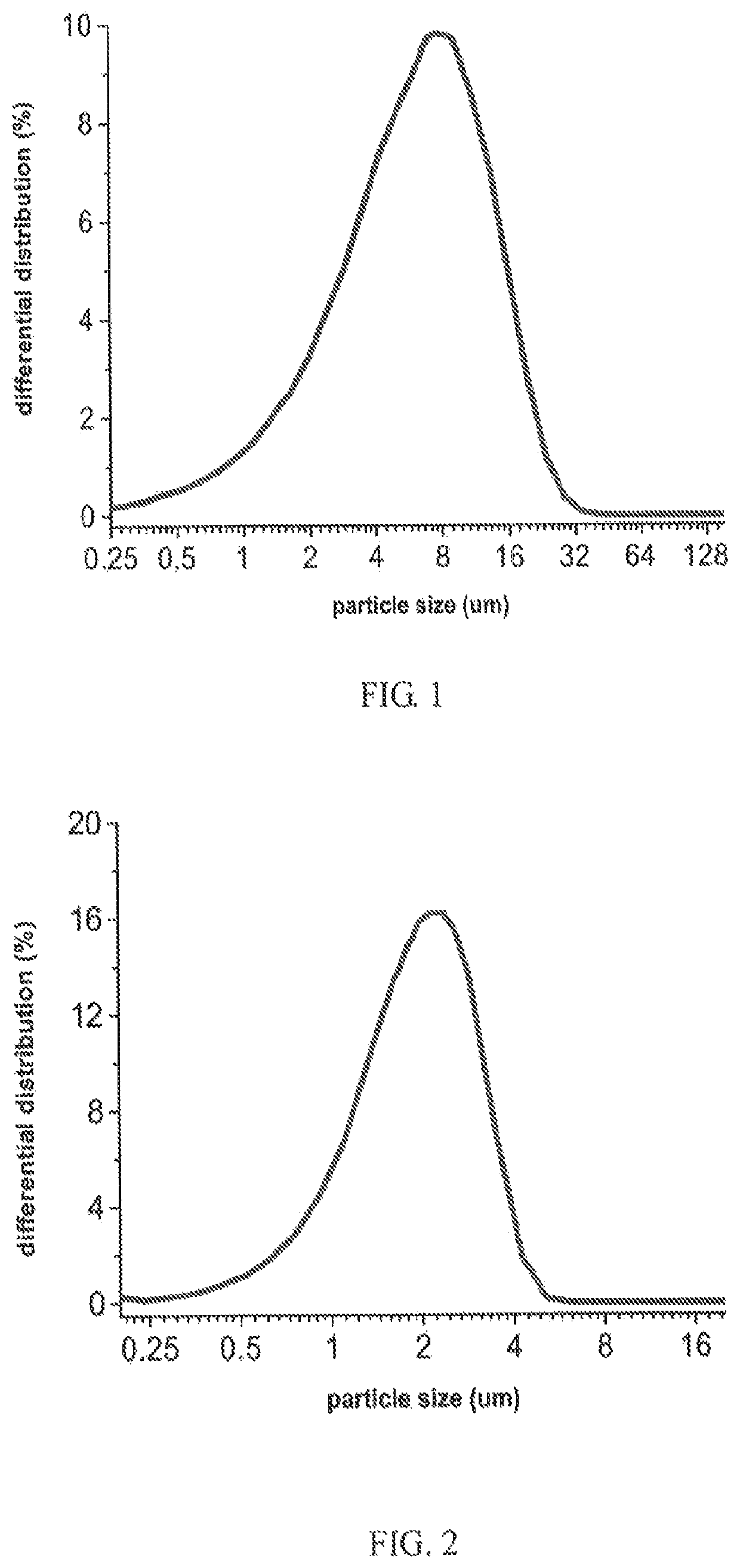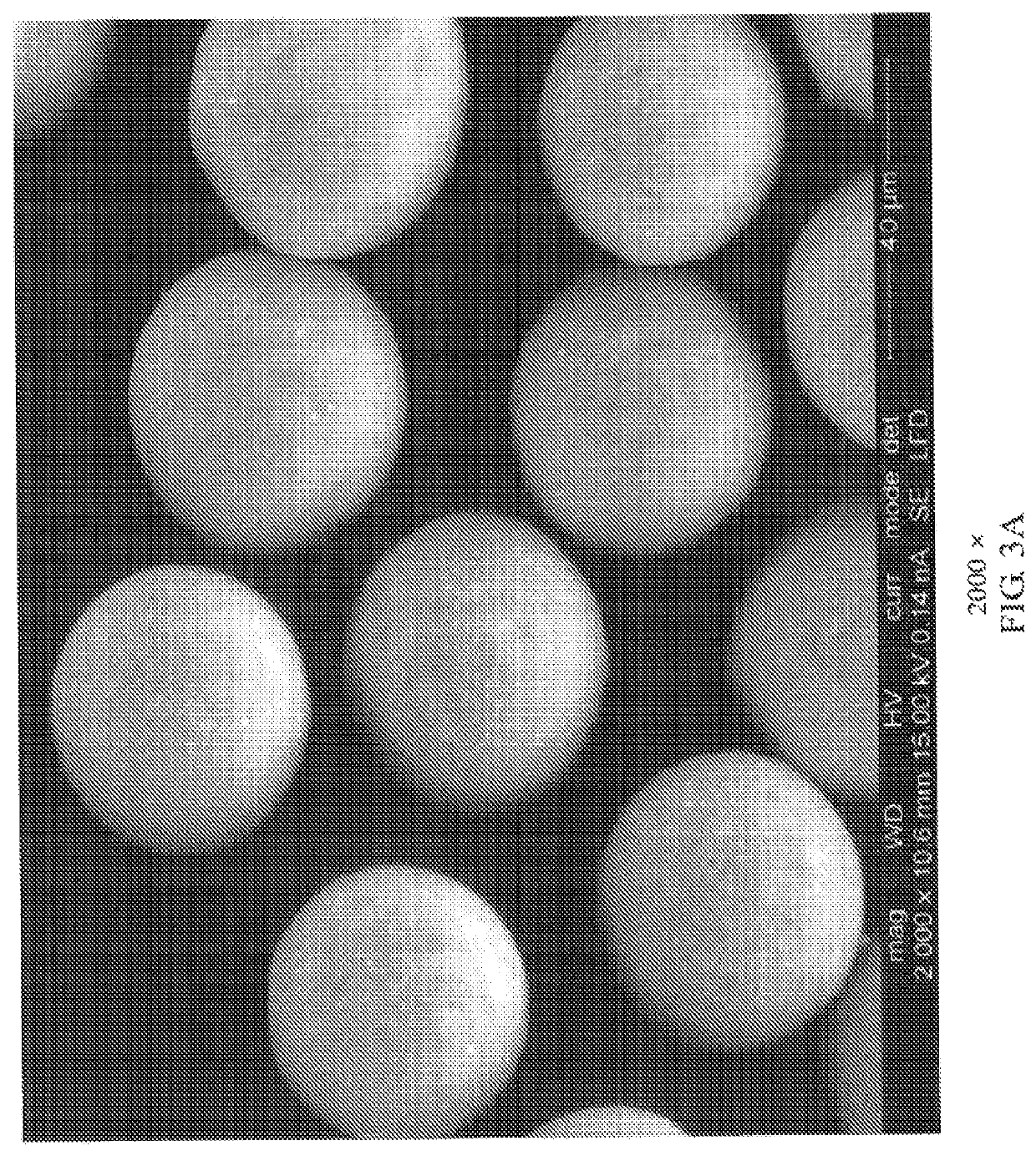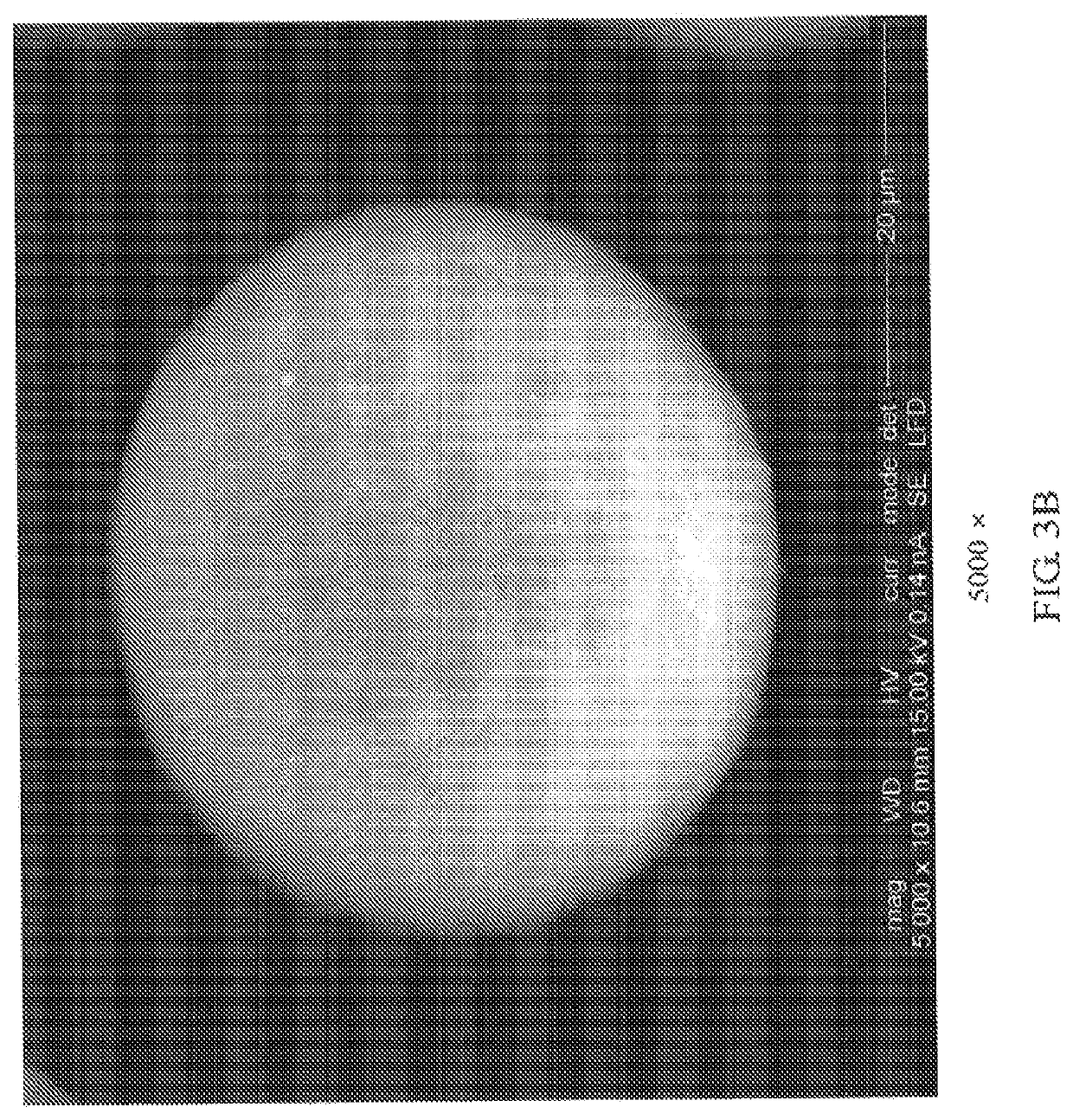Spherical porous hydroxyapatite sorbent and methods thereof
a sorbent and porous hydroxyapatite technology, applied in the direction of instruments, chemistry apparatus and processes, other chemical processes, etc., can solve the problems of low active site level on the crystal surface after heat treatment, irregular particle shape and size, and low mechanical strength
- Summary
- Abstract
- Description
- Claims
- Application Information
AI Technical Summary
Benefits of technology
Problems solved by technology
Method used
Image
Examples
example 1
of Nanostructured Hydroxyapatite
[0089]To prepare nanostructured hydroxyapatite, 3 kg of calcium hydroxide powder was added slowly into 30 L of water to form a calcium hydroxide suspension, with mechanical stirring to ensure that the suspension was evenly dispersed in the reaction vessel. The suspension temperature was maintained at 35° C. while stirring. Then an aqueous solution (5 L) containing 2.7 kg of phosphoric acid (85% w / w) and 0.1 kg of ammonium phosphate monobasic was added into the above suspension over a period of 16 hours, while the reaction temperature was maintained at 35° C. After the completion of addition of the above solution, the suspension was stirred continuously for additional 4 hours to obtain the nanostructured hydroxyapatite. The pH of the resultant suspension was measured to be 8.5.
[0090]To obtain a high purity hydroxyapatite product, the pH of the final suspension was controlled within the range of about 7 to 12, preferably 8 to 11. A varying amount of the...
example 2
on of Milled Hydroxyapatite
[0091]First, the hydroxyapatite primary particles obtained from Example 1 were further milled into smaller particles. A ball-mill method was applied, and zirconia beads of 0.8 mm particle size were used in the equipment.
[0092]Specifically, the hydroxyapatite suspension obtained in Example 1 was continuously pumped into a milling chamber filled with zirconium beads. The milling chamber was maintained under a high pressure. To remove the heat produced during the course of milling, circulated cold water was applied. The milled hydroxyapatite suspension was collected in a separate container. The above milling process was repeated for about 20 times to obtain the milled suspension sample.
[0093]The particle size distribution was measured by laser scattering diffraction. FIG. 1 shows particle size distribution curve of the un-milled hydroxyapatite suspension obtained in Example 1. FIG. 2 shows particle size distribution curve of the milled hydroxyapatite suspensi...
example 3
on of Spray-Dried Hydroxyapatite Powder
[0096]The highly spherical hydroxyapatite particles were obtained using spray drying method. It is desirable to form highly spherical particles which would greatly enhance the particles' mechanical strength. To achieve this object, it was found to be necessary that an appropriate amount of dispersant be added into the suspension before spray drying.
[0097]Specifically, in an experiment 7 g of sodium polyacrylate was slowly added into 35 L of hydroxyapatite suspension with vigorous stirring. The suspension gradually became less dense and more homogeneous. Its viscosity was lowered and its flowability was greatly improved.
[0098]The above suspension was then pumped into a vertical drying chamber through an atomization device equipped with revolving disk and spray nozzle, together with a hot air gas stream. The inlet temperature of air gas stream was set at 165° C. and the exiting air gas stream had a temperature of 110° C. The fine particles of hyd...
PUM
| Property | Measurement | Unit |
|---|---|---|
| pore size | aaaaa | aaaaa |
| density | aaaaa | aaaaa |
| particle size | aaaaa | aaaaa |
Abstract
Description
Claims
Application Information
 Login to View More
Login to View More - R&D
- Intellectual Property
- Life Sciences
- Materials
- Tech Scout
- Unparalleled Data Quality
- Higher Quality Content
- 60% Fewer Hallucinations
Browse by: Latest US Patents, China's latest patents, Technical Efficacy Thesaurus, Application Domain, Technology Topic, Popular Technical Reports.
© 2025 PatSnap. All rights reserved.Legal|Privacy policy|Modern Slavery Act Transparency Statement|Sitemap|About US| Contact US: help@patsnap.com



